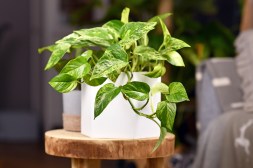Essential Tools and Materials for Successful Drywall Repairs: An Expert’s List
When it comes to home improvement, repairing damaged drywall is a task that many homeowners face. Whether caused by water damage, accidents, or general wear and tear, understanding the right tools and materials can make your drywall repair projects easier and more effective. In this article, we’ll provide you with expert tips on the essential tools and materials needed for successful drywall repairs.
Basic Tools Required for Drywall Repair
To start off your drywall repair journey, it’s important to have the right basic tools on hand. You’ll need a utility knife for cutting out damaged sections of drywall and a taping knife to apply joint compound smoothly over patches. A drywall saw is also useful for larger cuts or holes that need replacing. Lastly, don’t forget about protective gear like goggles and masks to keep yourself safe while working.

Materials Needed for Patching Holes
For patching holes in your drywall, you’ll require some specific materials. These typically include patches (either pre-made mesh or paper), joint compound (also known as mud), and sandpaper in various grits to ensure a smooth finish after repairs. If you’re dealing with larger holes, consider using a piece of new drywall cut to size along with screws or nails to secure it in place before applying the joint compound.
Specialized Tools for Larger Repairs
If you’re confronting larger repairs or more extensive damage, additional specialized tools may be beneficial. A T-square helps achieve precise cuts when sizing new pieces of drywall. A power sander can save time during the finishing process compared to manual sanding; just remember that it creates dust. For those who prefer precision when finishing joints between sheets of drywall, consider investing in a corner trowel.
Finishing Touches: Paints and Primers
Once you’ve repaired the damaged area of your wall, it’s time for finishing touches. Primer is essential before painting; it ensures better adhesion of paint over newly patched areas while minimizing imperfections showing through the final coat. Depending on your existing wall color or texture, choose paint wisely – typically satin finishes are easier to clean than flat paints.
Tips from Experts on Achieving Flawless Results
To wrap up our guide on repairing damaged drywall successfully, here are some expert tips: Always allow adequate drying time between coats of joint compound; this will help prevent cracks later on. When sanding seams after they’ve dried completely—use light pressure instead of heavy-handed strokes—to avoid damaging surrounding areas further. And lastly—practice patience. Good work takes time.
With these essential tools and materials at hand—and expert tips guiding your efforts—you’ll be well-equipped for any drywall repairs that come your way. Happy repairing.
This text was generated using a large language model, and select text has been reviewed and moderated for purposes such as readability.


